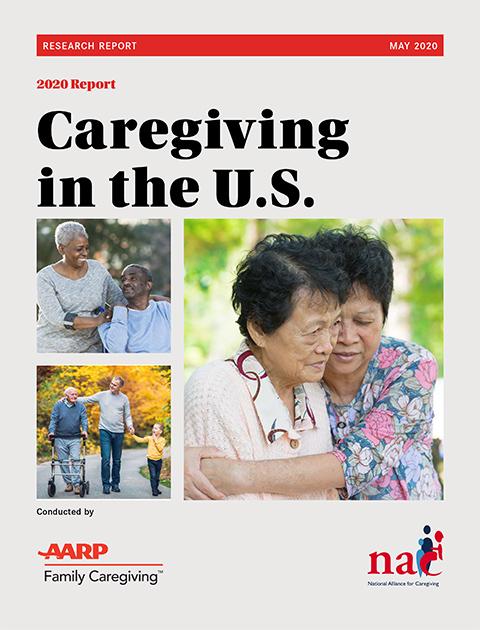
2020
Caregiving in the U.S. 2020
This study presents a portrait of unpaid family caregivers1 today. The National Alliance for Caregiving (NAC) and AARP are proud to present Caregiving in the U.S. 2020, based on data collected in 2019.
A national profile of family caregivers first emerged from the 1997 Caregiving in the U.S. study. Related studies were conducted in 2004, 2009, and 2015 by NAC in collaboration with AARP. This study builds on those prior efforts and replicates the new methodology implemented in 2015, allowing for examination of changes to caregiving since the last data collection effort in 2015.
The core areas we examined in this study include the following:
- The prevalence of caregivers in the United States
- Demographic characteristics of caregivers and care recipients
- The caregiver’s situation in terms of the nature of caregiving activities, the intensity and duration of care, the health conditions and living situation of the person to whom care is provided, and other unpaid and paid help provided
- How caregiving affects caregiver stress, strain, and health
- Financial impact on caregivers
- Impacts on and supports provided to working caregivers
- Information needs and resources
- Technology and role of online supports
Because adult caregivers’ circumstances can vary markedly depending on the age of their care recipient, NAC and AARP will be publishing two companion reports in the coming months that separately explore the experiences of caregivers whose recipient is (a) age 18 to 49, with trend comparisons to the 2015 study; and (b) age 50 or older, with trend comparisons to the 2015 study.